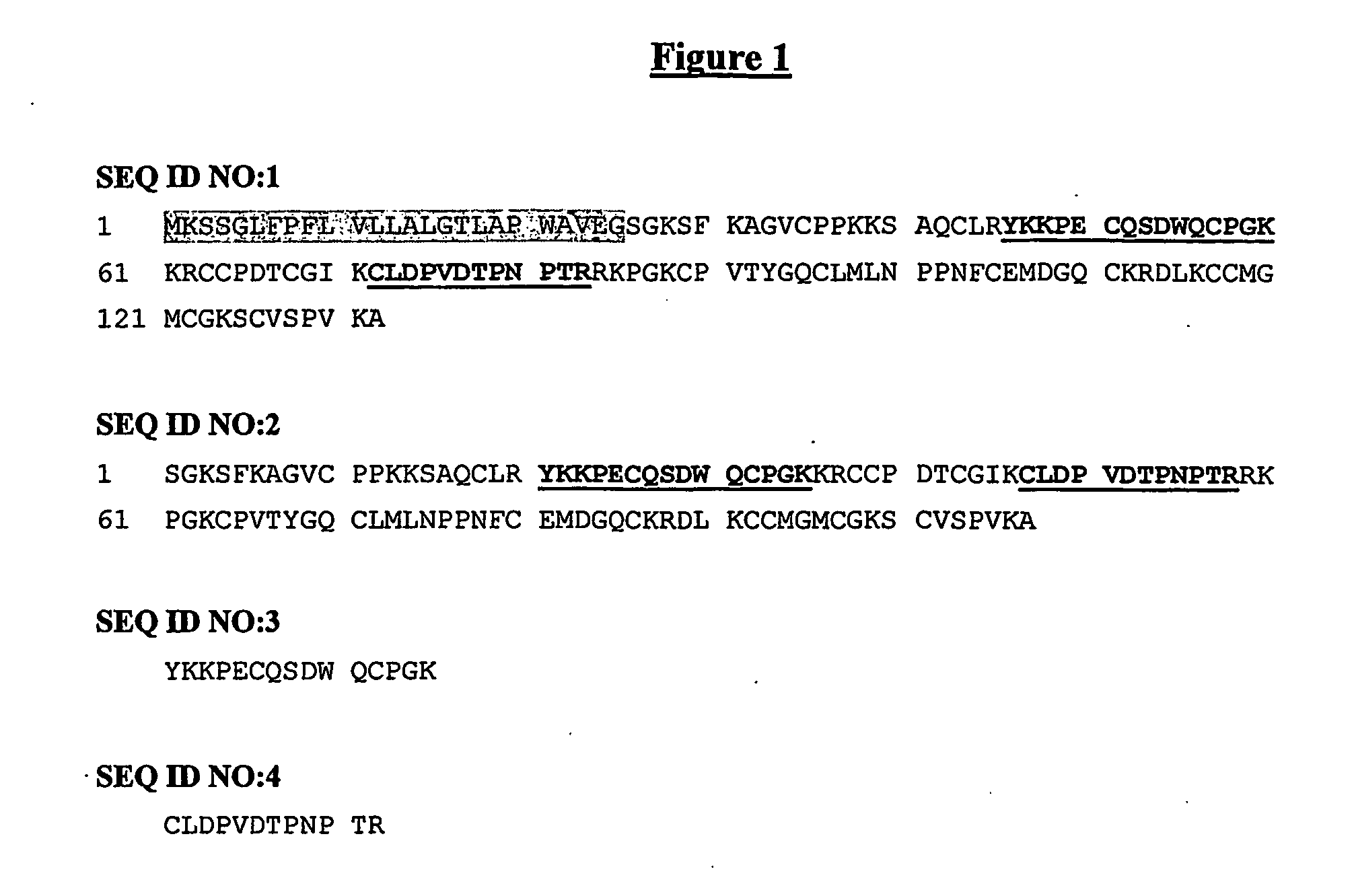Secreted polypeptide species associatedwith cardiovascular disorders
a technology of secreted polypeptides and cardiovascular disorders, which is applied in the field of active polypeptide species, can solve the problems of rapid decline of the risk of cardiovascular disease, lack of oxygen supply in the tissues of organs, and major health risks of patients with cardiovascular disease, and achieve the effects of increasing the solubility, stability and circulating time of the polypeptide, and reducing the risk of developing a disorder
- Summary
- Abstract
- Description
- Claims
- Application Information
AI Technical Summary
Benefits of technology
Problems solved by technology
Method used
Image
Examples
example 1
Characterization of CPP Levels in Disease and Control Populations
[0278] Subjects enrolled in the Duke Databank for Cardiovascular Disease were selected on the basis of coronary artery disease (CAD). A total of 241 CAD patients and control individuals were further matched for gender, age, and ethnicity and individuals with plasma abnormalities were excluded. A set of 53 CAD patients and a set of 53 control individuals were established. Six liters of plasma were pooled from each set. An aliquot of plasma was retained from each individual, thus allowing a positive result in the pooled sample to be confirmed for each member of the population. Such confirmation is valuable to erase possible confounding effects of an individual with an aberrant level of a specific polypeptide that is not related to a cardiovascular disorder. Two and a half liters of pooled plasma from each population was subjected to separation by multiple chromatography steps according to the MicroProt.™ process as foll...
example 2
Chemical Synthesis of CPPs
[0310] In this example, a CPP of the invention is synthesized. Peptide fragment intermediates are first synthesized and then assembled into the desired polypeptide.
[0311] A CPP can initially be prepared in, e.g. 5 fragments, selected to have a Cys residue at the N-terminus of the fragment to be coupled. Fragment 1 is initially coupled to fragment 2 to give a first product, then after preparative HPLC purification, the first product is coupled to fragment 3 to give a second product. After preparative HPLC purification, the second product is coupled to fragment 4 to give a third product. Finally, after preparative HPLC purification, the third product is coupled to fragment 5 to give the desired polypeptide, which is purified and refolded.
Thioester Formation
[0312] Fragments 2, 3, 4, and 5 are synthesized on a thioester generating resin, as described above. For this purpose the following resin is prepared: S-acetylthioglycolic acid pentafluorophenylester i...
example 3
Preparation of CPP Antibody Compositions
[0319] Substantially pure CPP or a portion thereof is obtained. The concentration of protein in the final preparation is adjusted, for example, by concentration on an Amicon filter device, to the level of a few micrograms per ml. Monoclonal or polyclonal antibodies to the protein are then prepared as described in the sections titled “Monoclonal antibodies” and “Polyclonal antibodies.”
[0320] Briefly, to produce an anti-CPP monoclonal antibody, a mouse is repetitively inoculated with a few micrograms of the CPP or a portion thereof over a period of a few weeks. The mouse is then sacrificed, and the antibody producing cells of the spleen isolated. The spleen cells are fused by means of polyethylene glycol with mouse myeloma cells, and the excess unfused cells destroyed by growth of the system on selective media comprising aminopterin (HAT media). The successfully fused cells are diluted and aliquots of the dilution placed in wells of a microtite...
PUM
| Property | Measurement | Unit |
|---|---|---|
| concentrations | aaaaa | aaaaa |
| pH | aaaaa | aaaaa |
| pH | aaaaa | aaaaa |
Abstract
Description
Claims
Application Information
 Login to View More
Login to View More - R&D
- Intellectual Property
- Life Sciences
- Materials
- Tech Scout
- Unparalleled Data Quality
- Higher Quality Content
- 60% Fewer Hallucinations
Browse by: Latest US Patents, China's latest patents, Technical Efficacy Thesaurus, Application Domain, Technology Topic, Popular Technical Reports.
© 2025 PatSnap. All rights reserved.Legal|Privacy policy|Modern Slavery Act Transparency Statement|Sitemap|About US| Contact US: help@patsnap.com

